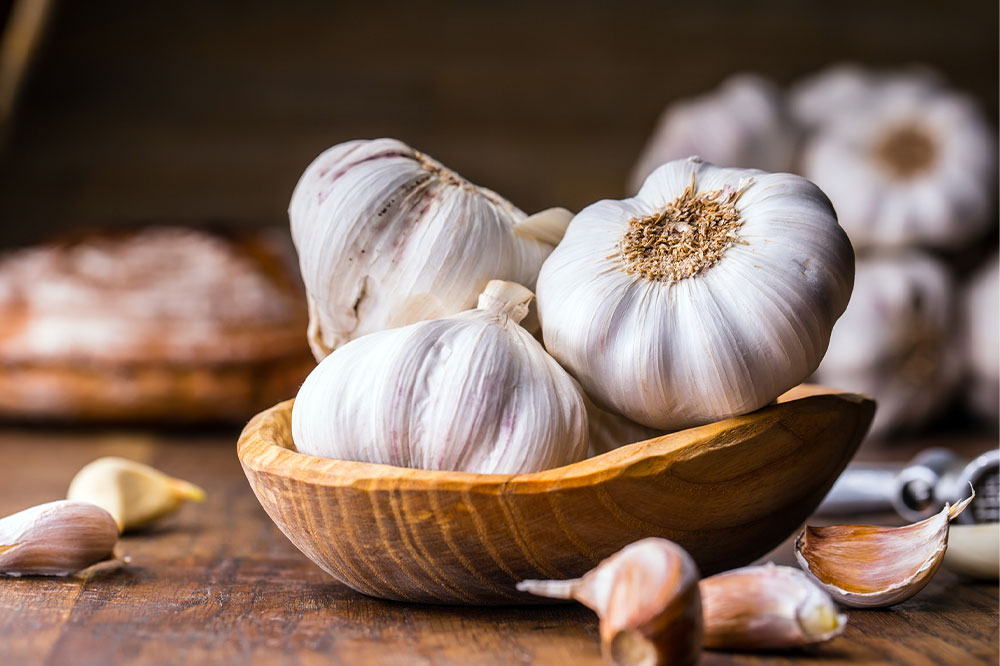5 foods that can lower cancer risk

Can what we eat help prevent serious illnesses like cancer? The link between disease and foods has been extensively studied. For instance, the research findings of the World Cancer Research Fund and the American Institute for Cancer Research have indicated that food choices greatly affect one’s health and well-being. The results also suggest that certain plant-based foods can help lower one’s cancer risk. So, here are some of the best foods to have:
Garlic
This pungent food item’s benefits outweigh the inconvenience (i.e., bad breath). Its odor is brought on by its sulfur compounds, which are also responsible for stopping the development of cancer-causing substances in the body. Additionally, garlic can help speed up DNA repair and kill cancer cells. Garlic also battles bacteria, especially the kind of bacteria associated with stomach cancer (H. Pylori bacteria). Studies have also indicated that garlic can reduce the risk of pancreatic, colon, esophageal, and breast cancer. To get the most out of garlic, peel and chop the garlic cloves and let them sit for 20–30 minutes before cooking them. This enables the activation of enzymes and the release of sulfur compounds. Adults should have one clove of garlic per day for better health.
Broccoli
Studies have suggested a link between cruciferous vegetables (like broccoli, cauliflower, kale, and cabbage) and cancer prevention. A few lab studies showed that sulforaphane obtained from broccoli could help thwart the development and progression of the disease in several ways. Broccoli can be a great addition to meals to reduce the risk of prostate, lung, colon, and breast cancer. However, to get the most out of the vegetable, it should be steamed and consumed without being coated in greasy sauces or cheese.
Berries
Recent studies have pointed out that berry extracts can slow down the growth of cancerous cells, and among them, strawberry and raspberry extracts had the strongest effects on colon cancer cells. Both strawberry and raspberry are rich in antioxidants like vitamin C and the phytochemical called ellagic acid, which is considered to lower the disease risk. Ellagic acid exhibits anti-cancer properties in laboratory tests. It can help increase the enzymes that destroy the cancer-causing substances and slow tumor growth. This phytochemical can also help prevent bladder, lung, skin, esophagus, and breast cancers. In addition, the berries also contain flavonoids, which suppress the production of an enzyme that damages DNA and has been linked to lung cancer. Other berries like blackberries, blueberries, and cranberries are also great additions to your nutritional regimen as they also exhibit antioxidant and anti-inflammatory properties.
Spinach
Spinach is rich in carotenoids like zeaxanthin and lutein that can get rid of free radicals from the body. Free radicals are unstable molecules that can cause damage to the body. Carotenoids are found in dark leafy vegetables like kale and spinach. An NIH-AARP study conducted with a sample size of nearly half a million people indicated that those who ate more spinach were less susceptible to cancer of the esophagus. Some research also says that this vegetable can help prevent ovarian, endometrial, mouth, lung, and colorectal cancers. Additionally, spinach is also high in folate and fiber, which can lower the risk of certain diseases. This superfood can also help produce new cells and repair DNA. It is best to lightly cook spinach leaves and add them to salads or soups; preparing it this way (or having it raw) can help one get the most lutein.
Carrots
Carrots are usually linked to eye health, but a lesser-known fact is that this vegetable is packed with nutrients that can help one fight diseases. Carrots contain beta-carotene, an antioxidant that protects cell membranes from toxin-induced damage and slows down the growth of cancer cells. Additionally, the vegetable also contains phytochemicals, which can lower the risk of cancers of the mouth, pharynx, esophagus, stomach, and breast. However, cooked carrots can show better results than having them raw. Let the carrots rest after steaming or boiling them for about 15-20 minutes. Dice them when done so that the nutrients are not lost.
Those affected by the disease should follow a balanced meal plan that includes one or more of these five food items. Further, better food choice becomes crucial in restoring strength and improving immunity when one is undergoing rigorous treatment for cancer.
Treatment
Doctors can recommend radiotherapy for certain kinds of cancer. A popular option recommended by doctors is Xofigo radium 223 cancer treatment — an injection used to treat prostate cancer that has spread to the bones. Xofigo contains radioactive material radium 223, which targets cancer cells. The cells absorb this material, leading to the release of radiation that travels a short distance to kill malignant cells. So, due to its limited range, surrounding healthy cells receive little or no radiation. The option is prescribed in these conditions:
When hormone treatment stops working for patients
When the illness does not respond to surgical treatment that lowers testosterone
In male patients, radium-223 can help treat cancer that has spread to the bone but not to other parts of the body. While Xofigo radium 223 cancer treatment is suitable for female patients, it is usually not prescribed for women who are pregnant.






